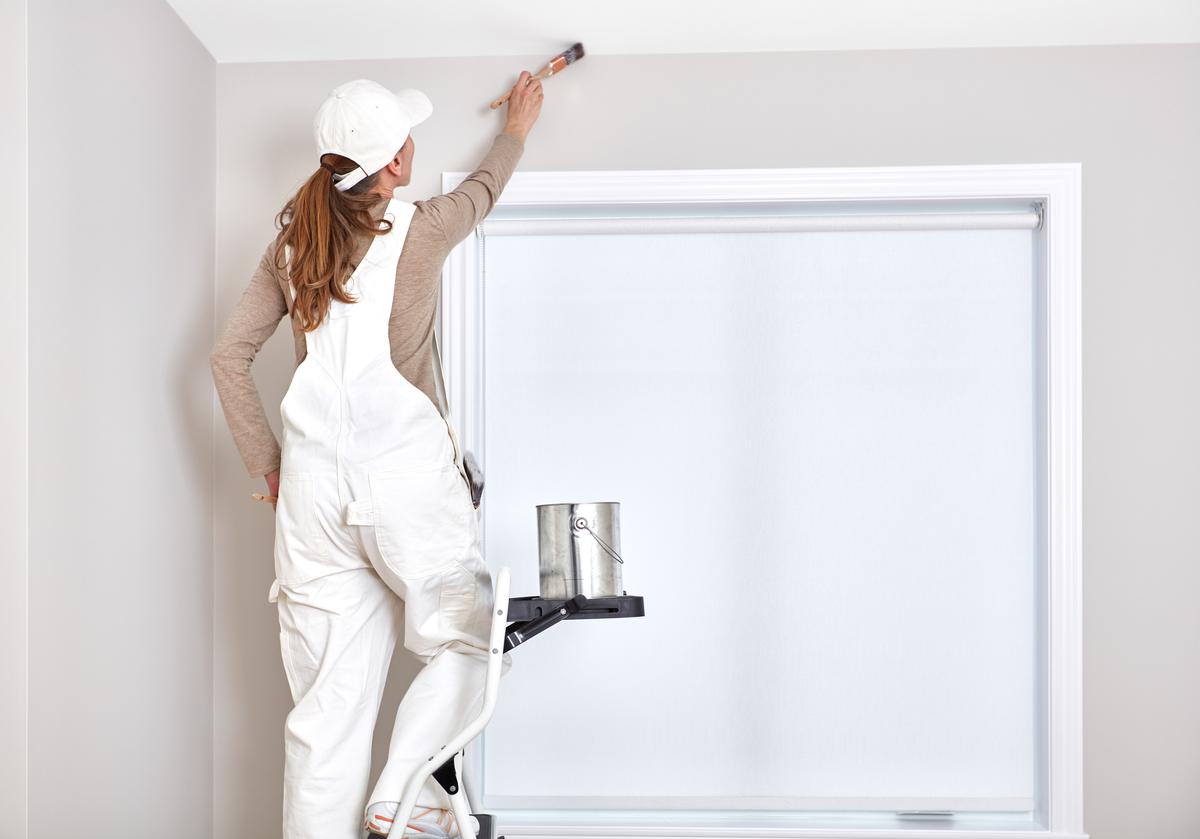Carrying out a fresh paint job is one of the biggest favors you can do for your home. Nothing brings a sparkle of freshness to a room more than newly painted walls. With some helpful guides and tips, you can go about a DIY paint job in the most cost-effective way possible. Moreover, by surveying the costs involved in advance you can better plan your budget and time commitment, and even determine in which cases it might be better to hire a professional.

Painting Equipment Every Homeowner Should Consider Having
Before getting started with an interior paint job, making a list of items you’ll need can help you set your budget accordingly. It is likely that you already have some of these tools, allowing you to cut down on part of the costs.
- Paint Roller
Depending on quality and size, the prices range from five dollars up to fifteen.
- Roller Extension
Extension poles are available at nearly eight dollars for standard quality and up to 30 dollars for heavy-duty units. You can normally find roller extensions sold with the roller as a set.
- Paint Pads
Paint pads are available for an average of seven dollars.
- Paintbrushes
You can buy a paintbrush for just a couple of dollars.
- Paint Tray
Paint trays go for as little as a dollar.
- Sandpaper
Whether it’s 150-grit, 200-grit, or more, a pack of sandpaper costs about five to ten dollars on average.
- Painter’s Tape
Painter’s tape is available for different types of surfaces, each costing five to ten dollars. A cheaper but not as durable option is masking tape. However, painter's tape is preferable if you plan on leaving it on for well over a couple of hours.
- Putty Knife/Paint Scraper
You can buy plastic scrapers at relatively cheaper prices (available for less than four dollars). However, you’ll find much better quality steel scrapers for not too much more.
- Drop Cloths
Although you can use plastic sheets instead, you’ll most likely have to throw them away afterward. Canvas sheets, however, can be reused at least twice —plus, you’ll be doing the environment a huge favor. The price range is quite wide, with the difference having to do with size and material.
- Rags
Even though brand-new ones are not more than 3 dollars, you can use whatever’s lying around in your utility room or turn old clothes disposed of after a decluttering session into makeshift rags.
- Ladder
You most probably already have a ladder at home. But if you’re a new homeowner and starting everything fresh, stepladders will be the biggest investment from the tools list usually starting at 50 dollars. For your own safety, it’s better to go for the best quality you can find, since the cheaper ones can be somewhat flimsy.
While you can buy each item separately, certain supply stores will probably have painting kits ready to go. If your paint job doesn’t require a specific tool, or if you already have some from your previous paint job, you’d be cutting down on part of the cost. The latter case is why it’s convenient to go for the better quality in the first place — your tools will essentially have a longer lifespan. A few of these tools may also be useful for applying wallpaper.
How to Calculate How Much Paint You’ll Need

Measurements to Account for When Painting an Interior
Although there are certain factors to consider when determining the amount of paint you should get, simply bear in mind the rule of thumb; a gallon of paint can cover a surface of 400 square feet. A gallon of primer, on the other hand, covers only 250 square feet on average. Whether you’re only painting one room or the whole interior of your home, keep in mind that these figures account for the size of a small room. For bigger rooms, the numbers will go up for surface area and for gallons of paint needed.
Another thing you should take into account is the number of coats of paint you’re planning on applying. In most cases, you would be going for two layers; three if you’re switching from a darker color to a lighter one. Other important considerations are surfaces with a lot of texture in addition to windows and doors. Naturally, the more texture a wall has, the more paint you’ll need to cover all the crevices and bumps.
In any case, it’s always better to err on the right side and buy an extra can of paint. Even if you’re left with a surplus, you’ll never know when it might come in handy for some touch-ups in the future or a creative unwinding session of splattering it on a canvas.
How Much Does Paint Cost

Tips on Budgeting Your Interior Paint Job
When you’re out to buy indoor paint, you’ll find that the prices vary and this can depend on its color, type, and brand.
The price difference in terms of color mainly has to do with the pigments and solvents used in the paint. White paint is typically the cheapest, while other colors such as blue and red are higher up the price range. The pricing is also dependent on the type and brand.
Low-grade paint usually costs about $20 and high-grade paint up to $100. Average prices typically range between $30 to $50 per gallon. The room you’re painting can help determine whether you want high-grade paint or if you can make do with low-grade. For example, you want better quality paint in a living room where you and guests will be spending a lot of time. But if you’re repainting the basement, you probably don’t need to invest too much in paint quality. To further help put things into perspective, paints with a matt finish are usually the cheapest, and those with a gloss finish tend to climb up the spectrum. In other words, the glossier the paint, the higher the price.
Besides color and type, brands will be the next determiner of price, with each offering a small variation in quality. No need to be overwhelmed though, the hardware store sales rep will help you figure it out in no time and stay on budget.
Painting Yourself Vs Hiring a Professional

DIY Projects to Take on With Your Family
Painting the interior of a house might seem like a pretty easy and straightforward project. However, there's a good deal of precision involved — more so if you're going for high-end paints. If all you feel you need to do the job yourself is brush up on some painting techniques, you can avoid the costs of hiring a painter. If you don’t feel confident you can get a perfect finish, then it’s probably best to ask an interior house painter.
Professional house painters often bring their own equipment, which would save you some money in that regard. Nevertheless, that money (plus some more) will go to labor. When you're hiring a painter, you may be paying for their services by the hour ($30-50 on average). More experienced professionals, on the other hand, may charge per square foot ($1.5 to $3 on average). These seasoned painters are also able to cover more areas in less time. So although you won’t have to pay yourself to paint your house, you can definitely save time by hiring a professional.
To make the best decision, take into account the difference between the service fee, the price of the kit, and most importantly the scope of work. That is to say, it might be cheaper to hire a painter than to buy a whole kit for just one room.
Other Things to Consider
When budgeting your DIY painting project, it’s important to account for the miscellaneous details that may have an impact on the costs involved.
The average costs mainly refer to basic paint jobs, which may apply to most cases. However, let’s say you want to give your hallway a fancy texture by painting its walls in a unique pattern. Of course, those averages may not apply anymore. Suppose you want to paint a section of your reading room matt beige, and the other section a slightly glossier blue; this is when you need to adjust the pricing equation to take both types of paint into account.
One last detail you shouldn’t take for granted is how long the paint will serve you. Opting for the cheapest quality might be more costly in the long run as you’ll need to refresh much sooner than with higher quality paint. In order to prolong the life of your current efforts, it’s better to go for that slightly more expensive brand if it means better quality.





comments